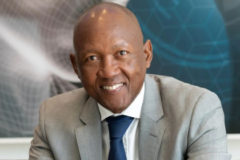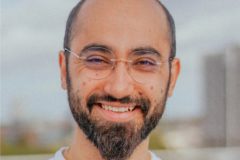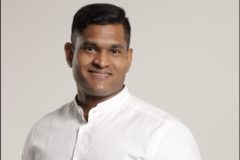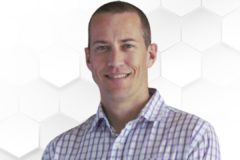From a fresh and relatable perspective, the Ask an Investor series focuses on investors in Africa — Investment Banks, sovereign wealth funds, Private Equities, Venture Capitalists and every other class of investors, explaining why and how these investments happen by talking to the people who make them happen.
In 2017, Sanmi Lajuwomi identified a problem with the solar leasing space in Nigeria.
Optimistic that it was worth further investigation, he pooled his personal funds and that of a high-net-worth individual in the UK, and undertook a two-year pilot study. At the end of the study, he had a better understanding of the customers and the challenges of running a business in Nigeria. He returned to Nigeria in 2019.
Lajuwomi’s company Winock began by leasing solar equipment which could save small businesses up to 70% on electricity costs. The company has since added other productive use equipment such as sewing machines, fridges and freezers.
In 2019, they raised funds from some investors and got connected to Acumen. Impressed by what they saw, Acumen started a conversation with them.
In March 2020, the pandemic brought a lot of uncertainty for the young startup of 10 people. Surprisingly, Lajuwomi got a call from Acumen, they hadn’t concluded the due diligence process but in the light of recent happenings, they made him an offer of a $50,000 grant or convertible debt.
Within a few weeks, the loan was disbursed and Winnock was able to retain 100% of its staff without a salary reduction. Later in the year, Acumen invested in Winnock.
Acumen is an early-stage non-profit impact fund that invests in companies whose products and services enable the poor to transform their lives. Its first appearance in Africa was in 2006 when its Kenyan office was set up, while its Lagos office was later created in 2012.
Over the years, it has invested across West African countries like Nigeria, Ghana, Sierra Leone and East African countries like Kenya, Rwanda, Uganda, Ethiopia, and Tanzania. Collectively, it has invested over $40million in African companies and its operations in Africa account for about 30% of Acumen’s global footprint.
My first contact with Acumen was through their Acumen Academy online courses. In July 2018, I took their Storytelling for Change course. For a long time, I had thought Acumen was an education company, and that was the starting point of my conversation with Meghan Curran, West African Director of Acumen.
Daniel Adeyemi: Why these courses?
Meghan Curran: We started with a physical leadership development program, our West Africa fellows program. From that program, we started to think about how we could teach some of those skills to a broader audience so that people working on social change problems anywhere, could access these different pieces of content that would strengthen their work.
That’s how the online courses came about. We started the online courses in 2012/2013 and to date have had more than 500,000 people participate in courses around the world in over 193 countries. The curriculum has expanded to include more courses asides leadership. The objective of these courses is to just help social entrepreneurs we may end up eventually investing in someday or generally help build other entrepreneurs who want to build their own skills.
DA: Now that we’re clear Acumen is not just an education company, What does Acumen do?
MC: The original idea for Acumen was to bring the best of philanthropy to focus on solving problems for the poor. The best of both of those worlds is what we now call the patient capital approach. What that means is that Acumen takes money from different donor agencies and foundations and makes investments in these early stage companies tackling problems of poverty.
Once we make that investment, we’re often doing equity deals and holding our position in a company for a number of years. When we exit our stake in the company that capital is returned to us. In a typical investment fund that returned capital would go back to the investors who had put money in and they would earn their returns.
In our model, nothing goes back to the investors because the investors in the first place are donors. Instead that money comes back to Acumen and we redeploy it and reinvest it. We may use it to make follow-on investments in our existing portfolio, or we may use it to make new investments and to continue to grow our portfolio.
The second thing that’s really important is that we also have flexibility in terms of returns. Most investment funds have a specific return target that they’re committed to achieving, because we’re not returning capital to our investors, we’re just trying to recover exactly what we put in. We have somewhat moderated return expectations, and this enables our entrepreneurs to really stay focused on the social objectives that they’re trying to achieve without being forced, either to do something like pursue growth at all costs, and to hit exponential scale overnight.
DA: How do you pick the companies you invest in?
MC: Over the last couple of years in West Africa, we’ve been focused primarily on renewable energy and agriculture. In both instances, we’re looking for companies that have been operational anywhere from two to five years and have demonstrated a track record and revenue growth.
They don’t have to be profitable at the time we invest. In fact, most of them are not. There has to be a path to profitability where we can see where the break-even point is and where they will become profitable. I would say the thing that’s consistent across any of the companies we look at is really wanting to get to know the entrepreneur. The assessment of the entrepreneur or the founding team is on two or three different levels. The first is values alignment. We’re not trying to impose Acumen’s mission or social objectives on an entrepreneur. We want to find entrepreneurs who, independent of Acumen, are interested in creating the same type of impact we want to see. Obviously, a significant percentage of their customer base has to be individuals living below the poverty line.
The second piece is the operational and technical capacity of the entrepreneur or the founding team. This means that they have done their homework on the industry or the sector that they’re working in. It’s sometimes reflected in the strength of the team that they have around them.
DA: What are the sectors you’re focused on?
MC: The last couple of years we’ve been really focused on renewable energy and agriculture. We’re really starting to shift our impact definition to be inclusive of other sectors or business models.
We are asking ourselves how we look at transportation, waste management or light manufacturing, sectors that are often employing large numbers of low-income individuals and where they can make adjustments to their business models, to ensure that the jobs they’re providing pay a living wage or create some kind of social safety net.
DA: In your world of patient capital, How long does it take to do due diligence?
MC: It really depends on how prepared the company is when we meet them and where they are in their stage of development. For our due diligence, It’s just really about understanding the business model, understanding what their growth projections are and what some of those underlying assumptions are. That can take a month or two. Our more formal diligence where we’re out doing these other interviews, conducting site visits, talking to customers, suppliers, other investors that you may have. Also doing our own kind of market research and market landscaping to make sure things all add up.
That can take another month or two. Once we get the investment approved there’s documentation and that’s where the lawyers come in and we’re negotiating the details of the terms. From when we first meet you to when we make the investment, I would say six to nine months.
DA: What does a typical investment from you look like?
MC: We do anything from $200,000 to $500,000 as the first investment.
I would say there’s something we’ve learned along the way. When we started out, we didn’t expect that if we could help these companies achieve scale, that there would be a long line of other investors waiting to follow us, but that there would be an availability of secondary capital that would enable us to exit. What we’ve seen is that it’s challenging for a couple of reasons. The markets we operate in are still in some ways underdeveloped such that most investors that are coming in, want to see their cash go to grow the company, not to buy existing investors.
The second piece is that we find that some of our entrepreneurs actually really value having Acumen as a board member to help protect that social objective. They sometimes don’t want us to leave even when there’s an opportunity. This is challenging and in a good way, but still challenging. What we’ve started to do, with some of our more recent investments to address this, is to experiment with different investment instruments that enable us to have a clearer path to liquidity. In a recent investment we did in Sierra Leone, we actually structured it as a self-liquidating equity instrument where I think after a six or seven year period, the company has the opportunity to buy back shares from Acumen. In this way, the ownership stake eventually stays with the entrepreneurs and with the company, we have a path to some capital recovery, and yet in the short term, it’s equity financing, that gives them the freedom and wiggle room to do what they need to do in the short to medium term.
In general, we end up holding our investments anywhere between seven to ten, sometimes up to 12 years, but we are trying to be creative about how we structure those investments to reduce, or to shorten that time horizon.
DA: What’s your relationship with other ‘traditional’ investors considering the fact that there’s only so much an impact fund can do?
MC: I think we really see ourselves as a feeder to some of those more traditional investors. In the version of the world where everything goes according to plan, we’re investing in some of these companies still at a relatively early stage. We’re often the first institutional investor that they’ve had. If we’re able to accompany them to hit a certain growth trajectory or a certain level of maturity and scale, that’s when they then become more attractive to some of those more commercial or traditional investors. We really see ourselves as helping build that pipeline of investments. What we see in West Africa is that there is a decent number of equity investors that are looking for investments where they want to put in a million or $3 million. Some even start at $5 million and there aren’t that many companies that can absorb that type of capital.
DA: How do companies find you or you find companies you invest in?
MC: It’s definitely a mix. We participate in the startup ecosystem. We go to different business plan competitions or industry events. We’ve partnered with a couple of other earlier-stage investors to try to get to know and develop the pipeline.
Through our fellowship program and through our online courses as well. What we’re really focused on in this coming year is continuing to push our footprint beyond Lagos and Abuja. We really want to go out to some of the other cities in Nigeria and be able to generate and develop a pipeline that’s beyond the usual suspects.
DA: What is a notable investment for you?
MC: d.light which we first invested in 2007. The founders of that company from the beginning were really keen on developing a product or a suite of products that will be affordable for low-income consumers. They didn’t develop the first solar panel but what they did was take a $20/25 product and push it down to be a $5 product. From there came solar home systems and now we’re getting into solar appliances and not that they were the only company, but they were definitely one of the first movers and one of the early companies to really see low-income communities as a market.
We ended up making five different investments in delight over a 10 year period. We’ve now partially exited and the company I think has served 80 million customers around the world. Not all of them in Africa, but a significant concentration. That’s definitely one of our success stories.
DA: What trends are you seeing in the market?
MC: As I mentioned earlier, I don’t think we’re the only impact investors that have seen that exits in these markets are more challenging. The response to that has been some of these more creative financing instruments, whether it’s doing revenue-based financing or these other self-liquidating instruments.
Another trend, which I think is a little more unfortunate is that the impact investing landscape has become pretty crowded with impact investors that are looking for market-ratemarket rate returns. At that point, it’s kind of hard to distinguish the impact funds from the commercial funds. This isn’t a problem in and of itself because I do think there are business models that have fewer trade-offs between impact and returns.
DA: See trends in terms of sectors?
MC: All of a sudden everyone is doing something that’s agritech. Although there’s a lot an app can do, there’s also a lot more, particularly when you’re working with small farmers, that is always going to be offline.
We look at agritech companies and we’re really trying to evaluate what are their tech capabilities, as well as their offline capabilities? In some instances, offline is the harder part of the work. I think entrepreneurs need to have an awareness that tech should enable your solution, but it can’t always be – it won’t always be – the full solution.
DA: Which Acumen courses would you recommend?
MC: I would say the adaptive leadership course. Adaptive leadership is a framework to help think through problems that are complex with no known solution. On the technical side, I’ll recommend social impact analysis and lean data. I think a lot of social entrepreneurs know in their head what they’re trying to do in terms of the impact that they want to see, but being able to quantify it is a challenge.





















